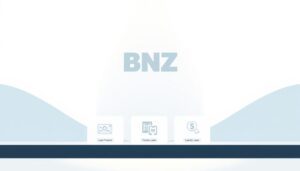Financial challenges come in many forms—unexpected bills, home repairs, or even planned projects. How do you find a borrowing strategy that aligns with your specific goals? Personal loans offer flexibility, with amounts up to $50,000 and APRs starting as low as 5.99%. But not all lenders are the same.
LendingTree and SoFi, for example, provide options ranging from 12 to 84 months. Some charge origination fees between 1% and 6%, while others skip these costs entirely. Comparing these details helps borrowers avoid surprises later.
Checking rates through platforms like these typically requires only a soft credit check. This means your credit score stays intact while you explore possibilities. It’s a practical first step for anyone weighing their choices.
Understanding the full picture—like APR ranges and repayment terms—ensures smarter decisions. Whether covering emergencies or funding a dream vacation, tailored solutions exist. The key lies in matching lender terms to your timeline and budget.
Overview of Personal Loan Landscape
From Upgrade to LendingClub, lenders now offer terms catering to both strong and fair credit histories. Borrowers can access amounts ranging from $1,000 to $100,000, with eligibility often tied to a minimum credit score of 580. This flexibility makes personal loans a versatile tool for everything from medical bills to home upgrades.
Lenders prioritize two main factors: creditworthiness and income stability. A 680+ credit score typically unlocks lower rates, while applicants below 620 may face stricter requirements. Upgrade stands out for accepting scores as low as 580, whereas LendingClub focuses on debt-to-income ratios below 40%.
The best personal loan providers balance competitive APRs with transparent fees. For example, some lenders charge origination costs upfront, while others bake them into monthly payments. This variation highlights why comparing multiple offers matters.
Today’s market evolves rapidly, with digital platforms simplifying rate checks. Many lenders now provide prequalification without hard credit inquiries. Research remains critical—terms change frequently, and understanding fine print ensures borrowers secure deals matching their financial goals.
Factors Influencing Loan Rates and Terms
Understanding what shapes borrowing costs can save thousands over a loan’s lifetime. Lenders set rates between 6.49% and 35.99% APR based on three key factors: credit history, repayment timelines, and loan amounts. Strong credit profiles often secure the lowest rates, while shorter terms typically cost less than extended agreements.
SoFi demonstrates this clearly. Applicants with 700+ credit scores might qualify for 7.99% APR, while those below 650 could see rates above 18%. LightStream takes it further, offering rate discounts up to 0.5% for borrowers using autopay. These incentives directly lower monthly payments.
Loan size also matters. Borrowing $10,000 might carry a 9% rate, while $35,000 loans could drop to 7.5% with the same lender. Why? Larger amounts spread administrative costs thinner. However, origination fees (1%-6%) still affect total expenses. Always calculate both rates and fees when comparing offers.
Smart borrowers leverage every advantage. Setting up automatic payments often trims rates by 0.25%-0.5%. Some institutions reward direct deposit users with additional discounts. These strategies help lock in better terms, turning good deals into great ones.
Minimum Credit Score and Eligibility Requirements
Your credit score is the gateway to loan approval, but each lender has unique benchmarks. Upgrade requires a minimum score of 580, while Upstart may accept scores as low as 300 for applicants with strong income or education credentials. These thresholds determine who qualifies and under what terms.
Eligibility extends beyond three-digit numbers. Most lenders require U.S. residency, a valid bank account, and proof of steady income. Traditional banks like Wells Fargo often demand higher scores (660+) compared to online platforms. Digital lenders sometimes use alternative data—like employment history—to assess risk.
Lower scores rarely mean automatic rejection, but they increase costs. Borrowers below 620 might face APRs 10-15% higher than prime candidates. Some lenders add origination fees up to 8% to offset risk. Secured loans using collateral can help bypass strict score requirements.
Improving eligibility starts with checking credit reports for errors. Paying down existing debt and avoiding new credit applications also helps. Timely bill payments gradually rebuild trust with lenders, potentially unlocking better rates within six months.
Understanding Origination Fees and Additional Costs
Borrowers often focus on interest rates when comparing loans, but upfront costs can significantly impact affordability. Origination fees—one-time charges for processing applications—range from 0% to 9.99% depending on the lender. Upgrade, for example, deducts up to 9.99% from loan proceeds, while SoFi caps these fees at 7%.
These fees reduce the amount borrowers receive. A $10,000 loan with a 5% origination fee disburses only $9,500. Some lenders fold this cost into monthly payments, while others require upfront payment. Comparing structures helps identify true expenses.
Late payment penalties add another layer. Most lenders charge $15-$40 for missed deadlines, and insufficient funds fees average $25-$35. These hidden costs can snowball if not managed carefully.
Fee transparency varies widely. Lenders like LightStream advertise no origination fees, whereas Avant includes them in APR calculations. Reading disclosures before signing prevents surprises and ensures borrowers choose terms aligning with their budgets.
Navigating the Application and Approval Process
Securing funds quickly starts with understanding how lenders evaluate applications. Most online platforms simplify the process into four steps: prequalification, document submission, approval, and funding. Borrowers begin by entering basic financial details—soft credit checks occur here, leaving credit scores untouched.
Lenders like LendingClub finalize approvals in as little as two hours after verifying income and employment. SoFi and LightStream also excel with same-day decisions for complete applications. These digital-first providers use automated systems to speed up reviews.
Your credit history plays a starring role during underwriting. Payment patterns, debt levels, and account diversity shape approval odds. Missed payments or high balances may trigger requests for additional documentation.
To streamline the application process: • Fix errors on credit reports beforehand • Gather pay stubs and tax returns in advance • Choose lenders matching your credit profile
Fast funding often depends on bank processing times. Approved borrowers typically receive funds within 1-3 business days. Electronic transfers beat paper checks, especially when timing matters for urgent expenses.
Loan Terms, Funding Time, and Payment Schedules
How long do you have to repay borrowed funds? Loan terms typically range from 12 to 84 months, directly shaping monthly payments. A 36-month term might require $350 monthly for a $10,000 loan at 10% APR, while stretching to 60 months drops payments to $212. Shorter terms save on interest but demand higher cash flow.
Funding speed varies widely. LendingClub often deposits funds within 24 hours for approved applicants, while SoFi processes some requests in under 8 hours. Traditional banks might take 3-7 business days. Urgent needs benefit from lenders prioritizing same-day funding through electronic transfers.
Repayment terms determine total costs. Choosing a 48-month plan instead of 72 months could save $1,200 in interest on a $15,000 loan. Lenders like Upgrade provide calculators to compare scenarios before signing agreements.
Three tips for selecting durations: • Match monthly payments to 10-15% of take-home pay • Align end dates with expected income changes • Avoid terms extending beyond the financed item’s lifespan
Smart borrowers balance immediate needs with long-term budgets. Reviewing all variables—from disbursement speed to payment schedules—helps secure manageable repayment terms without straining finances.
Evaluating Customer Service and Support Experiences
When financial questions arise, reliable support becomes as crucial as competitive rates. Discover leads with 24/7 phone assistance and weekend hours, earning J.D. Power awards for clarity in communication. Credit unions counter with personalized guidance—many assign dedicated advisors to walk borrowers through paperwork or repayment adjustments.
Digital lenders prioritize speed through chatbots and email ticketing systems. However, local institutions often provide face-to-face consultations for complex cases. This blend of accessibility options ensures borrowers choose channels matching their urgency and comfort levels.
Responsive service directly impacts satisfaction. One LightStream user reported resolving a payment date conflict in under 10 minutes via live chat. Such efficiency prevents late fees and credit score dips. Similarly, credit unions frequently extend grace periods for loyal members facing temporary hardships.
Quality support starts during applications. Lenders offering pre-approval checklists or document upload portals reduce processing delays. These tools—combined with proactive communication—help borrowers navigate requirements smoothly from initial inquiry to final payment.
Comparing Lender Offers and Product Features
Smart borrowers compare multiple options before committing to financial agreements. Upgrade, LightStream, and Upstart demonstrate how loan features vary across providers. Upgrade offers $1,000 to $50,000 with APRs from 6.99%, while LightStream provides up to $100,000 at rates as low as 5.99% for qualified applicants. Upstart stands out with AI-driven approvals, accepting credit scores starting at 300.
Key differences emerge in flexibility and perks. LightStream’s Rate Beat Program promises to undercut competitors’ offers by 0.10 percentage points. Upgrade allows co-borrowers, potentially improving approval odds for those with limited credit history. Upstart’s mobile app simplifies account management, letting users track payments and update information instantly.
Three factors determine the best personal loan matches: • Total repayment costs (APR + fees) • Funding speed for urgent needs • Tools for managing debt long-term
Comparison platforms like LendingTree streamline this process. They display offers from multiple lenders side-by-side, highlighting variations in terms and eligibility. LightStream often wins for low rates, while Upgrade appeals to those prioritizing flexible repayment schedules.
Unique features shape borrowing experiences. Joint applications spread responsibility between parties, and collateral options reduce risk for lenders. Mobile-first providers cater to tech-savvy users who value real-time updates. Evaluating these elements helps identify loans available for specific financial situations.
How Collateral Can Enhance Approval Odds
Putting up collateral transforms borrowing possibilities for those with imperfect financial histories. Secured loans require physical assets—like vehicles or property—to back the agreement. This reduces lender risk, often leading to better terms for applicants.
Home equity loans demonstrate this principle clearly. Borrowers using their property’s value as collateral might see APRs 3-5% lower than unsecured alternatives. Best Egg reports customers with lower credit scores (580-660) often secure rates around 8.5% when pledging home fixtures, compared to 12%+ for unsecured requests.
Collateral-backed agreements benefit both parties. Lenders recover losses through asset seizure if payments stop. Borrowers gain access to larger amounts or extended repayment windows. A $25,000 home equity loan could cost $4,200 less in interest over five years than an unsecured option at higher rates.
Three advantages of secured loans: • Higher approval rates for lower credit profiles • Reduced interest expenses through asset backing • Flexible terms for substantial financing needs
While unsecured loans work for quick cash needs, secured options provide long-term value. They particularly help homeowners leverage built-up equity without refinancing mortgages. Always verify asset valuation methods and repossession policies before committing.
Secured vs. Unsecured Loans: Key Considerations
Choosing between collateral-backed agreements and credit-based loans requires understanding their distinct risks and benefits. Secured loans demand physical assets like cars or savings accounts, while unsecured options rely solely on creditworthiness. Those with bad credit often find secured loans more accessible—Upstart approves applicants with scores as low as 300 if they pledge collateral.
Credit quality dramatically shapes offers. Discover demands 720+ scores for unsecured deals but skips collateral requirements for prime borrowers. Meanwhile, fair credit applicants (580-669) might secure better rates by offering assets—some lenders cut APRs by 4-6% compared to unsecured alternatives.
Collateral reduces lender risk but exposes borrowers to asset loss. Unsecured loans avoid this danger but typically carry higher rates. For example, a $15,000 secured loan might have 9% APR, while an unsecured version could hit 15% with similar terms.
Three decision factors: • Excellent credit profiles save most with unsecured options • Subprime borrowers benefit from secured approval odds • Asset valuation processes vary—confirm liquidation policies first
Ultimately, match loan types to financial stability. Strong credit histories unlock unsecured advantages, while collateral bridges gaps for riskier applicants. Always compare total costs—not just monthly payments—before committing.
Impact of Credit History on Loan Options
Your financial past plays a starring role in shaping borrowing opportunities. Lenders scrutinize payment patterns, credit diversity, and outstanding balances to gauge risk. These factors directly influence the annual percentage rate (APR) and maximum loan amounts available to applicants.
A 720+ credit score often unlocks APRs below 10%, while scores under 600 might see rates above 25%. Data shows borrowers with excellent credit typically qualify for amounts up to $100,000, compared to $5,000 caps for those with poor histories. Major credit bureaus—Experian, Equifax, and TransUnion—supply the reports lenders use to make these decisions.
Payment consistency matters most. Missing just one payment by 30 days can drop scores by 100 points, potentially doubling interest costs. Credit mix—having both installment accounts and revolving credit—shows responsible management. Lenders view this diversity favorably when setting terms.
Improving approval odds starts with checking credit reports for errors. Disputing inaccuracies can boost scores within weeks. Paying down credit card balances below 30% utilization also helps. These steps gradually demonstrate reliability, leading to better annual percentage offers over time.
Borrowers should request credit limit increases on existing accounts to lower utilization ratios. Avoiding new credit applications for six months before seeking funds prevents unnecessary score dips. Consistent financial habits rebuild trust, opening doors to larger loan amounts and competitive rates.
Utilizing Loan Offers for Debt Consolidation
Managing multiple debts can feel overwhelming. Personal loans streamline this process by combining credit card balances into one fixed-rate payment. For example, a borrower with $15,000 across three cards at 22% APR could save $3,200 in interest over three years through consolidation at 11% APR.
Single monthly payments simplify budgeting. Instead of tracking due dates for several accounts, borrowers focus on one predictable amount. Lenders like SoFi offer autopay discounts—typically 0.25% rate reductions—to further lower costs for automated payments.
Missed deadlines trigger late fees averaging $15-$40 per incident. Setting payment reminders or linking bank alerts helps avoid these charges. One Discover customer avoided $180 in penalties last year by syncing their loan due date with their paycheck schedule.
Real-world results show improved financial health. After consolidating $20,000 in medical bills, a LightStream user boosted their credit score 75 points within six months by eliminating revolving debt. This approach transforms chaotic repayments into structured progress toward financial freedom.
How to Improve Your Loan Qualification Odds
Strengthening your financial profile unlocks better borrowing opportunities. Start by reviewing credit reports for errors—one in five Americans finds mistakes affecting their scores. Disputing inaccuracies can boost credit ratings within weeks, potentially lowering interest rates by 3-5%.
Timely payments matter most. Lenders like SoFi prioritize applicants with 12+ months of consistent bill history. Setting payment reminders or automating minimum balances prevents late fees, which average $29 per incident. Reducing credit card balances below 30% utilization also signals responsible management.
Outstanding debt directly impacts approval odds. Paying off $2,000 from a $6,000 limit card improves debt-to-income ratios—a key metric for lenders. LightStream rewards borrowers who clear collections accounts, offering 0.5% APR discounts for clean credit profiles.
Three strategies to reduce borrowing costs: • Negotiate origination fees—some lenders waive charges for strong applicants • Opt for autopay discounts, saving 0.25% on rates • Compare prequalified offers to identify fee-free options
Financial institutions increasingly reward proactive behavior. Upgrade slashes rates by 2% for borrowers who complete financial literacy courses. These efforts demonstrate commitment to lenders, transforming marginal applicants into prime candidates.
Top Loan Options for Various Credit Profiles
Borrowing possibilities expand or shrink based on three digits—your credit score. Lenders tailor offers to different financial histories, with amounts ranging from $600 to $100,000. Those with 720+ scores often access maximum amounts at single-digit APRs, while applicants below 580 face stricter limits.
Upstart serves applicants with scores as low as 300, offering up to $50,000 for debt consolidation. LightStream requires 660+ but provides $100,000 loans at 5.99% APR for home improvements. These examples show how credit tiers directly shape available terms.
Income stability also influences loan amounts. A borrower earning $75,000 annually might qualify for $35,000 despite a 620 score. Upgrade and Avant frequently adjust limits based on debt-to-income ratios below 45%.
Understanding minimum credit requirements prevents wasted applications. Traditional banks often set thresholds at 680, while online lenders like OppLoans accept 580. Always verify these benchmarks before submitting requests.
Three steps to align needs with approvals: • Check free credit reports for accuracy • Compare lenders specializing in your score range • Calculate repayment costs using prequalification tools
Smart choices begin with recognizing where your financial standing fits. Matching credit profiles to lender specialties unlocks better rates and realistic borrowing limits.
💡 Understanding APR: What it Means for Borrowers
Emerging Trends in Personal Lending
The personal lending industry is undergoing rapid transformation as digital innovation reshapes borrower expectations. Advanced algorithms now analyze spending patterns and employment history to offer tailored rates. Platforms like SoFi use these tools to provide autopay discounts of 0.25% and direct deposit incentives, setting new standards for affordability.
Fee structures are becoming more competitive and transparent. Origination costs now range from 1.85% to 9.99%, with lenders like Upgrade displaying these fees upfront during prequalification. This shift helps borrowers compare true costs across providers before committing.
Credit card innovations are influencing loan products. Some lenders now offer balance transfer options with introductory rates as low as 3.99% APR. Others integrate flexible repayment schedules similar to credit card billing cycles, appealing to users seeking hybrid solutions.
Three key developments are shaping the future: • Dynamic pricing models adjusting rates based on real-time credit data • Collateral-free loans for prime borrowers with instant approval • Rewards programs mirroring credit card points systems
These trends signal a move toward personalized, tech-driven borrowing experiences. As competition intensifies, lenders prioritizing transparency and adaptability will likely dominate markets. Borrowers benefit through lower costs and streamlined access to funds.
Conclusion
Navigating financial decisions demands careful evaluation of available solutions. Comparing APRs, fees, and eligibility requirements helps identify lenders aligning with individual budgets. Maintaining strong credit remains crucial—timely payments and low credit card balances directly impact approval odds.
Thorough research prevents costly surprises. Reviewing origination fees and repayment timelines ensures borrowers understand total expenses. For those managing credit card debt, consolidation loans often provide fixed rates compared to variable credit card APRs exceeding 20%.
Regular credit monitoring unlocks better opportunities. Disputing report errors and reducing credit card utilization below 30% demonstrates financial responsibility. These steps improve access to favorable terms over time.
Informed choices stem from understanding lender requirements and personal limits. Whether covering emergencies or planned expenses, strategic use of financial tools supports stability. Leveraging comparison platforms and maintaining disciplined credit card habits helps secure optimal agreements.
The right financial product, chosen wisely, becomes a stepping stone toward achieving goals. By prioritizing transparency and alignment with personal circumstances, consumers build stronger financial futures.





